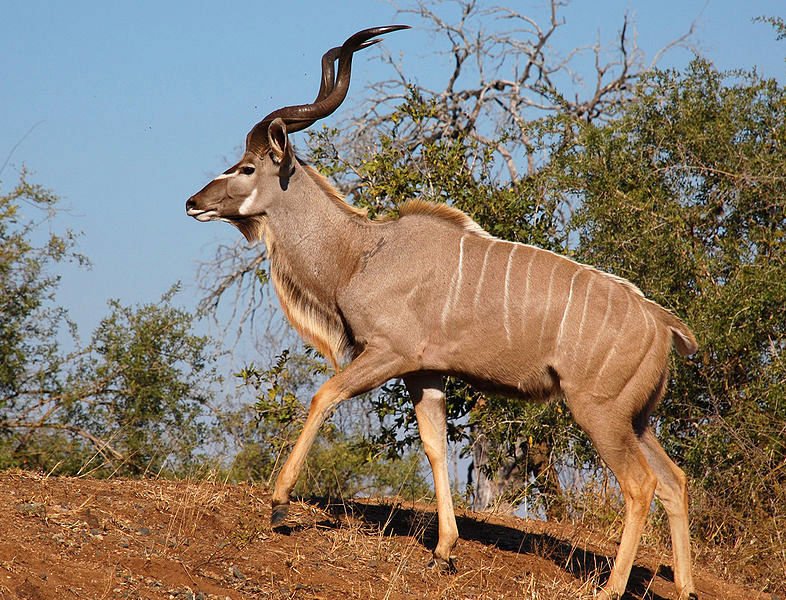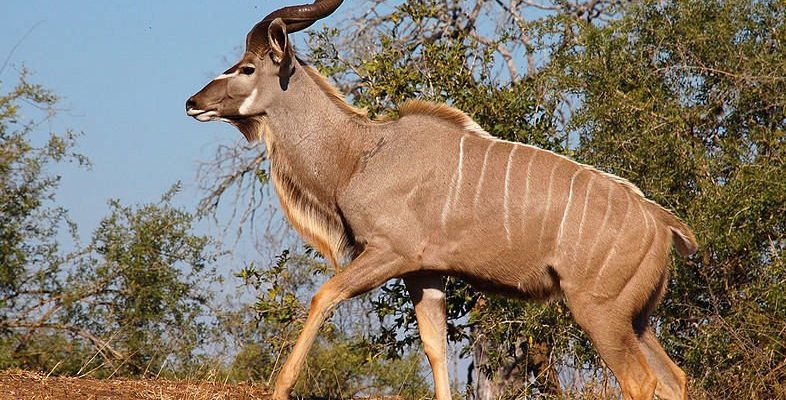
Let’s unpack some of the most common misconceptions about the Greater Kudu, why they matter, and how understanding the truth can enrich our appreciation of these animals. Think of it like peeling back layers of an onion; each layer reveals something fascinating and essential about these amazing animals.
Myth 1: Greater Kudus Are Just Like Other Antelopes
You might assume that Greater Kudus fit neatly into the antelope category without any quirks. But here’s the thing: they’re a bit different from your typical antelope. While they share the same general family, the Tragelaphinae, they have unique adaptations that set them apart.
For starters, Greater Kudus can grow to be quite large, standing about 4 to 5 feet tall at the shoulder. Their striking, spiral horns, which can reach up to 3.5 feet long in males, are a defining feature that isn’t present in all antelope species. This tells you that while they belong to the same family, their evolution has a story of its own.
They also have a different behavior pattern. Unlike many antelope that flock together in large herds, Greater Kudus tend to be more solitary or form small groups. This solitary nature impacts their social interactions and can lead to some misunderstandings when it comes to their behavior.
Myth 2: Greater Kudus Are Poor Swimmers
You might be surprised to hear this, but many people think that Greater Kudus shy away from water. The truth is, they are quite capable swimmers! In fact, these animals may need to cross rivers or streams to access feeding grounds or escape predators.
Imagine trying to navigate a landscape dotted with rivers and lakes—skipping the swim would limit your options. Greater Kudus have strong legs and a powerful build that aids them in swimming. When faced with water, they don’t hesitate! This ability allows them to thrive in varied habitats, from dense bush to open savanna.
Their natural instincts kick in when it comes to navigating their environment full of water. So, the next time someone says kudus can’t swim, feel free to correct them!
Myth 3: Only Males Have Horns
A prevalent misconception is that only male Greater Kudus sport those impressive horns. However, the reality is that both genders can exhibit horns, but there’s more to the story.
Male Greater Kudus develop beautiful, spiraled horns as they mature, which can be quite striking. Meanwhile, females usually do not grow horns at all. This difference in appearance is a classic example of sexual dimorphism in animals, where two sexes of the same species exhibit different characteristics beyond just their reproductive organs.
The males use their horns primarily for fighting during mating rituals and establishing dominance. These fighting displays can be quite a spectacle, showcasing the strength and agility of these animals.
Myth 4: Greater Kudus Are Always Found in Open Savannas
When picturing Greater Kudus, you might envision them gracefully roaming wide-open grasslands. While they do frequent savannas, saying they thrive only in these areas is misleading. In reality, they inhabit a variety of landscapes, including dense bushlands and light forests.
This adaptability allows them to find shelter from predators, such as lions and leopards. Their natural camouflage, combined with the dense foliage, offers excellent cover. So, they aren’t merely savanna dwellers but are quite versatile!
Their habitat choices can also be influenced by food availability. They primarily feed on leaves, shoots, and fruits found in various environments, making them foragers of diverse terrains.
Myth 5: Greater Kudus Don’t Communicate
If you’ve ever thought that Greater Kudus are silent creatures, let me explain. They actually have a range of vocalizations and body language to communicate with other kudus. It’s kind of like having a whole vocabulary that’s not immediately apparent to outsiders.
For instance, they’ll use a series of low grunts or barks when they feel threatened. These sounds serve as warnings to other herd members. Additionally, their body language is crucial; a flick of their ears or a specific posture can convey information about danger.
So, while they aren’t chatty like a parrot, they definitely have ways of letting their feelings be known. They’re more social and aware than myth would have you believe!
Myth 6: Greater Kudus Are Just Another Prey Species
Commonly, people think of Greater Kudus only as prey for larger predators. Yes, they are prey animals, but they possess a variety of traits that make them more than just easy pickings.
Their natural instincts for camouflage play a significant role in their survival. The brown and white stripes on their bodies help them blend into the dappled light of their forested homes. When they stand still, they can become nearly invisible, allowing them to evade keen-eyed predators.
They also have incredible agility. When startled, a kudu can leap up to 8 feet high and cover distances quickly, making it difficult for predators to catch them. It’s not just about being prey; they’ve got a few tricks up their sleeves!
Understanding the common myths and misconceptions about the Greater Kudu helps us appreciate these creatures on a deeper level. They’re not just beautiful animals; they’re complex beings with unique behaviors, habitats, and communication styles.
By unpacking these myths, we can cultivate a greater respect for their place in the ecosystem and increase our awareness of the challenges they face. Just like peeling an onion reveals its layers, exploring these misconceptions can lead to a richer understanding of wildlife. So, the next time you hear someone talking about kudus, you can share what you know—because now, you’re armed with the truth!

